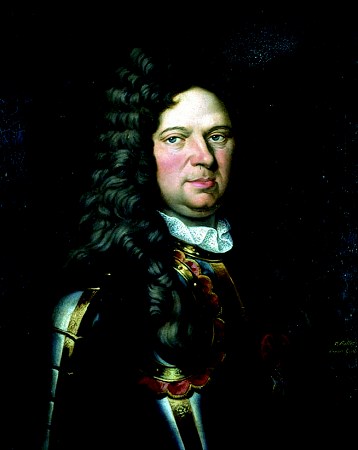
The most famous of the French privateers, Jean Bart (1650-1702), made his name as a daring commerce raider, before being created a Chevalier and joining the French Navy. While commerce destruction proved indecisive in the face of Anglo-Dutch sea control and insurance markets, it was nevertheless an effective cheap naval policy for a nation unable to fight for command of the sea.
Dunkirk Dunquerque Defenses – 1700
Privateer and French navy commodore. Born on 21 October 1650 in Dunkerque, Jean Bart as a teenager served in the Dutch navy under Michiel de Ruyter, where he learned the art of naval techniques and privateering. Later his knowledge of the Dutch coastline enhanced his skill as an independent privateer.
On the outbreak of the 1672-1674 First Anglo-Dutch War, Bart became a privateer for the French, probably hoping to feast on the more lucrative Dutch shipping. As captain of the small privateer Serpente, he fought six battles and captured 81 prizes, and he came to the attention of French Naval Minister Jean Baptiste Colbert. Although first denied a commission because of his social origin, Bart won a lieutenancy in 1679.
After further service against pirates off the coast of Portugal, Bart was promoted to commander in 1686 and received command of the frigate Railleuse. At the start of the 1688-1697 War of the League of Augsburg, while commanding a squadron guarding merchant vessels heading to Brest, Bart was captured and taken to Portsmouth. Escaping prison, he returned to France to command the Alcyon at the 30 June 1690 Battle of Beachy Head under Admiral Anne-Hilarion de Cotentin, Comte de Tourville. At the June 1693 Battle of Lagos, he sank seven enemy vessels. In June 1694, while commanding a six-ship squadron, Bart surprised a similar sized Dutch force escorting a grain convoy. He captured two Dutch warships along with a large number of grain ships and took his prizes to Dunkerque to help feed famine-ravaged France. The French government ennobled him for this action.
Bart then provided advice on the land fortifications around Dunkerque and defended the city against English attacks led by John Benbow in 1695-1696. Bart managed to run Benbow’s blockade of Dunkerque in May 1696 and seized additional prizes off the Dogger Bank. In 1697 King Louis XIV promoted him to commodore for his services to France. By the end of the war, Bart had accounted for victories over 30 enemy ships and the capture of 200 merchant ships. In 1697 Bart slipped through an English blockade to deliver the Prince de Conti, a candidate for the Polish throne, to Danzig.
At the end of the war Bart retired to Dunkerque. He died there on 27 April 1702. Bart proved himself an enterprising commander and he remains one of France’s greatest naval heroes.
Many anecdotes tell of the courage and bluntness of the 2.04 m tall, uncultivated sailor, who became a popular hero of the French Navy. He captured a total of 386 ships and also sank or burned a great number more. The town of Dunkirk has honoured his memory by erecting a statue and by naming a public square after him. During the carnival of Dunkirk, held every year the Sunday before Holy Tuesday, local people knee all together in front of his statue and sing the Cantate à Jean Bart. Jean Bart is viewed by the inhabitants of Dunkirk as a local hero.